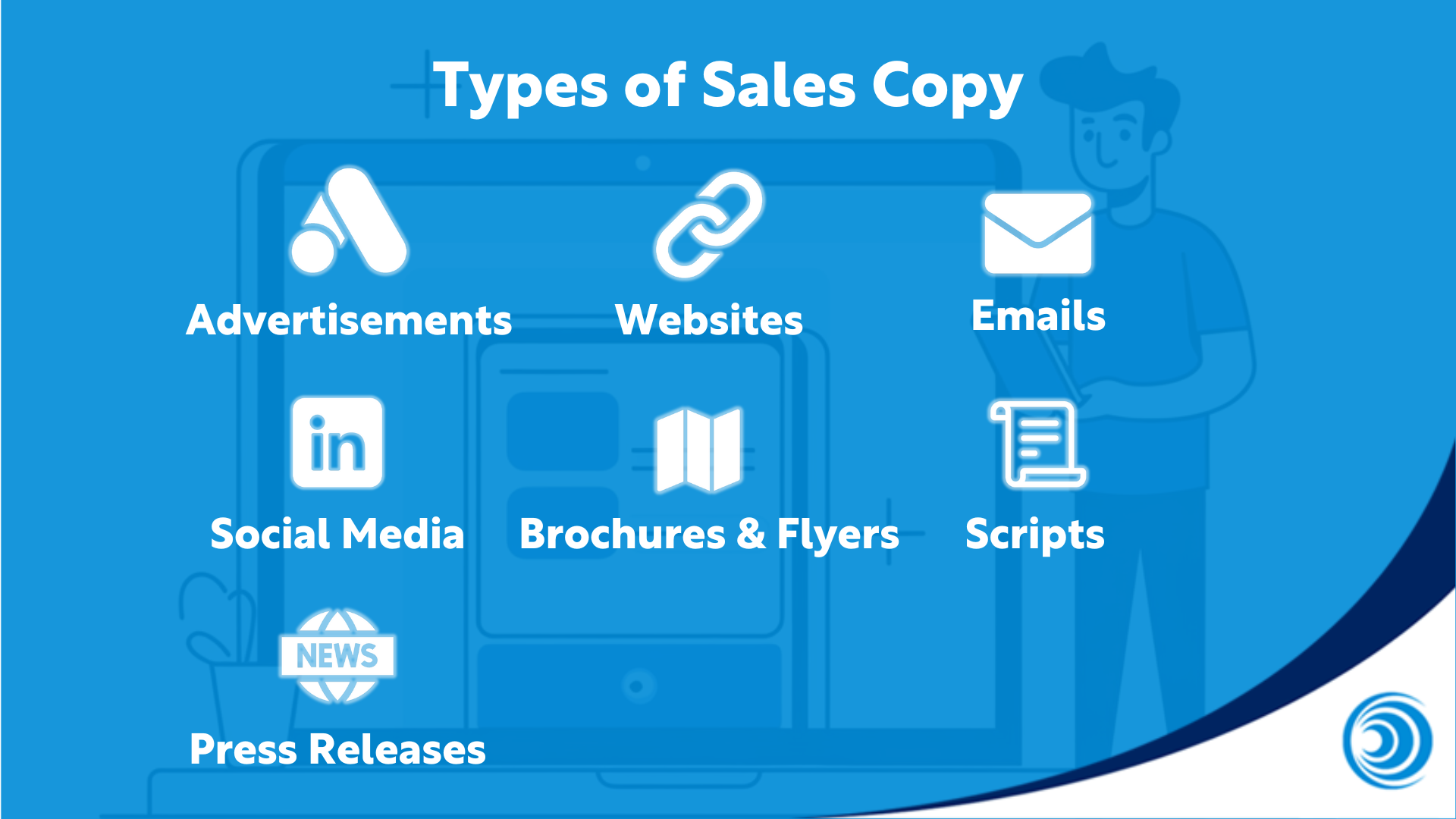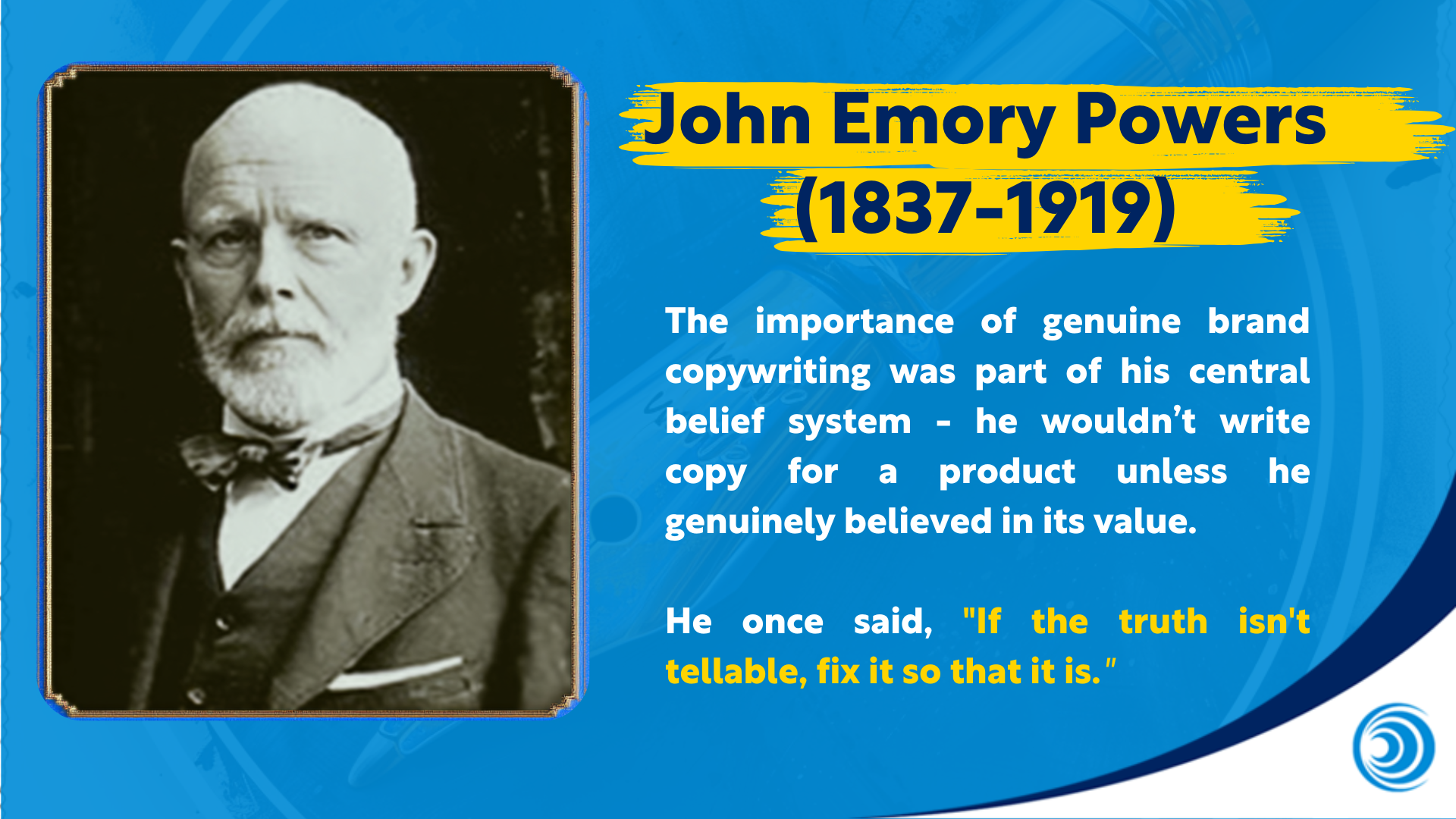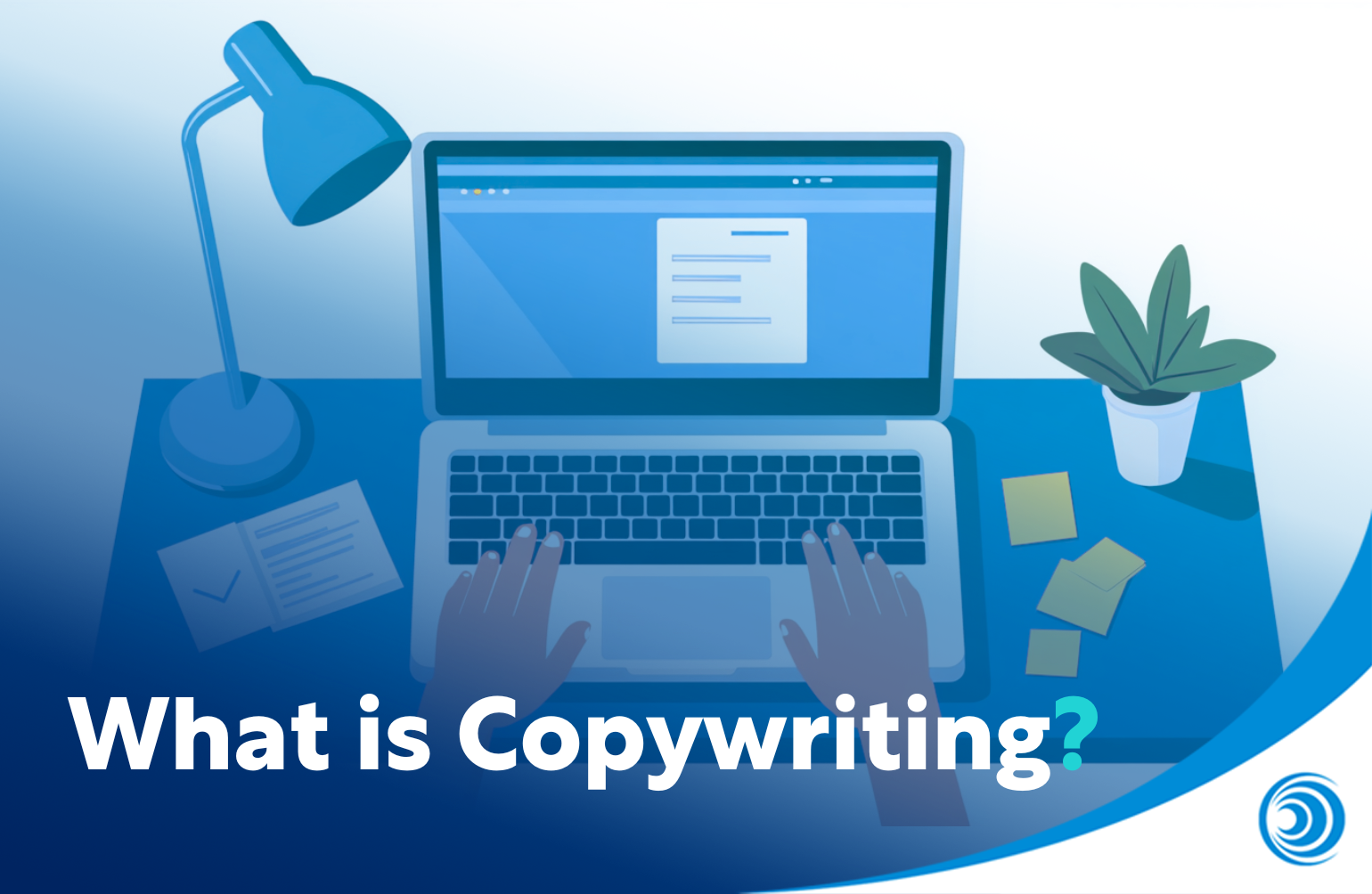- Fintech Design – The New Money Experience - October 9, 2025
- Influencer Marketing for Fintech: Does it Work? - October 3, 2025
- Viva Las Fintech: Money20/20 USA 2025 Is Coming - September 15, 2025
At its core, what is copywriting, exactly?
Why is it so crucial for your business’s success?
How can it make or break a digital marketing campaign?
Writing copy that effectively communicates your message to the relevant target audience can be a difficult task – especially when it can come in various mediums, different tones of voice, and can be part of varying strategies.
Whether it’s an eye-catching advertisement, a compelling email, or a captivating website landing page, effective copywriting weaves together creativity and strategy to influence and motivate readers.
In this blog, we dive into the fundamentals of copywriting: exploring its key components, its role in digital marketing campaigns, and why it’s essential for both businesses and brands.
By understanding what makes great copywriting, you’ll gain insights into how words can be wielded to captivate, convert, and create lasting impressions.
Copywriting: A Definition
Copywriting is written content that motivates, persuades, and inspires a specific target audience to take a desired action.
It plays a crucial role in shaping a customer’s perception of a brand and influencing their shopping habits. Calls to action range from customers making an impulsive purchase to signing up for a subscription service.
There are many different types of copywriting, each with their own merits. A marketer’s predetermined goals will decide which form should be used:
-
Web copy
-
Search engine optimisation (SEO)
-
Landing pages
-
Blog posts
-
Web content
-
Print ads
-
Direct mail
-
eBooks
-
White papers
-
Press releases
Copywriting is often tailored to a particular industry or topic. For example, business-to-consumer (B2C) copywriting and business-to-business (B2B) copywriting should be approached differently by skilled copywriters.
B2C is directed to the individual, whereas B2B engages with the organisation as a whole.
What is ‘copy’?
The word ‘copy’ was coined in the 15th century, when text used for publishing had to be physically copied by hand.
In marketing, it refers to written information used to communicate with a specific audience. Being a business owner does not automatically equate to having expertise in copywriting skills.
Types of ‘sales copy’
The different types of ‘copy’ can be transferred between various uses and combined to create content more tailored to the marketer’s requirements for the target audience. Such as…
-
Advertisements: Print, online, radio, and TV ads.
-
Websites: Landing pages, web pages, product descriptions, and homepage content.
-
Emails: Marketing campaigns, newsletters, and automated email sequences.
-
Social Media: Posts, ads, and sponsored content.
-
Brochures and Flyers: Printed promotional materials.
-
Press Releases: Announcements and news about a company or product.
-
Scripts: For video or audio content, such as commercials or promotional videos.

The importance of copywriting
Copywriting involves the skilful use of words. It is often combined with creative elements such as images, videos, and sounds, to motivate readers to take a specific action.
It plays an instrumental role in marketing and advertising for businesses of all sizes. It shapes how people perceive a brand, building its identity to foster loyalty, and guiding customers through the sales journey.
Every piece of copy is crucial to a brand’s overall marketing strategy.
From the concise creativity needed for social media posts to detailed product descriptions, well-crafted copy helps establish and maintain a consistent brand voice, making a brand more recognisable and trustworthy.
Copywriting significantly boosts marketing efforts by driving sales and converting leads. Creating engaging and exciting content captures and retains customers’ attention, leading to repeat business and increased revenue.
Writing copy helps to improve communication, effectively supporting content marketing campaigns. Clear and compelling copy demonstrates the value of a product or service, assisting customers in making the right decision.
Persuasive copy with relevant keywords can set a business apart from its competitors, highlighting its unique selling points and advantages.
A copywriting career offers various financial opportunities. Income can vary based on different approaches and settings within the field.
Common salaries for copywriters can range widely, but there are strategies to maximize fees and identify high-paying areas of copywriting. Understanding these financial aspects can help aspiring copywriters make informed decisions about their career paths.
The history of copywriting
Copywriting has a rich history, its origins can be traced back to the earliest forms of advertising and communication.
In its modern form, English-language copywriting first appeared in the 19th century. It came from the explosion of print media and a growth in literacy.
Soon after, businesses began to recognise the power of written words to promote their products and services.
Legendary copywriters in the 20th century, such as Claude Hopkins and David Ogilvy, emerged, bringing scientific methods and creative storytelling to the forefront.
The 1950s and 1960s marked a significant shift in copywriting with the advent of the Creative Revolution.
This period saw a move away from formulaic advertising towards more imaginative and emotive copy.
As a result of technological innovations, copywriting adapted to new mediums such as websites, email, and social media, all requiring skilled copywriting.
Copywriters saw a shift towards copy for content marketing and SEO (Search Engine Optimization) – combining the goal of informing and persuading readers with also ranking on search engines.
In recent years, copywriting has evolved to integrated marketing and multi-channel strategies. Marketers now use various sophisticated tools and strategies, such as AI tools like Chat GPT.
Extra copywriting skills
Copy editing
Copyediting is the process of editing copy to correct any inaccuracies or to improve it to help keep readers engaged.
It is used across numerous fields, including academia, publishing, journalism, and, most importantly – marketing.
The improvements can be anywhere from minimal to extensive. Ranging from tweaks to copy, adjusting the tone of voice to align with the brand’s identity, adhering to word counts, or completely re-writing entire sections.
A good copyeditor ensures that marketing materials are consistent with the brand’s personality and style, as well as adhere to established brand guidelines.
Their role involves relaying constructive feedback to in-house or freelance copywriters.
They may even have the final stamp of approval in the copywriting process before sending it for proofreading.
Where proofreading fits in
Many people (even marketers!) confuse copyediting and proofreading.
Proofreading is crucial in the overall editing process, identifying surface-level flaws and amending minor grammatical errors.
A proofreader’s role is to check the final copy of content; catching typographical mistakes, discrepancies in branding, and any other errors that may have been missed in previous editing stages.
It is the final step before sharing or publishing content. It ensures it is free from mistakes and maintains a well-polished and professional appearance, consistent with other marketing materials.
Copywriting vs content writing
Copywriting and content writing are often brushed with the same cloth, although they have distinct marketing functions.
Good copywriting is crafted for immediate impact, encouraging readers to start their journey down the sales funnel.
Content writing, on the other hand, educates readers over a longer period, establishing a trust to eventually drive customers down the sales funnel as part of a long-term strategy.
Each takes on a different writing style to engage readers. Copywriting consists of concise text that sometimes deviates from grammatical norms for a desired effect. Whereas, content writing is far more detailed and is a stickler for grammatical precision.
Their areas of focus also vary. A good copywriter should focus primarily on creativity and their audience’s psychographics. In comparison, content writers have deep understanding and clarity in their content.
What is a professional copywriter?
A copywriter is a professional who writes persuasive and compelling text, known as “copy,” with the primary goal of marketing or promoting a product, service, or concept.
A professional copywriter can work in a variety of settings. Including advertising agencies, marketing firms, corporate in-house marketing departments, or as freelancers.
Essential copywriting skills include:
-
Understanding the target audience: Knowing who the audience is and what appeals to them.
-
Creativity: Crafting messages that stand out and engage the audience.
-
Persuasiveness: Using emotive language that convinces the audience to take a desired action, such as purchasing a product or signing up for a service.
-
Research: Gathering information about the product, service, or topic to write accurate and compelling copy.
-
SEO (Search engine optimisation) knowledge: Understanding how to write web copy that ranks well in search engines.
John Emory Powers: Legendary copywriter
John Emory Powers (1837-1919) was the world’s first known full-time copywriter, becoming regarded as the ‘Father of Modern Creative Advertising.’

He developed his own unique sense of style after much experimentation when writing copy for American department stores like Lord & Taylor and Wanamakers.
His copy featured everyday English and short sentences, avoiding exaggerations and illustrations. The simple use of language which focused on the facts, contrasted with sweeping statements and emotional appeals that was popular in other advertisements.
The importance of genuine brand copywriting was part of his central belief system – he wouldn’t write copy for a product unless he genuinely believed in its value. He once said, “If the truth isn’t tellable, fix it so that it is.”
This highlights the importance of fact-checking and avoiding misleading claims. By focusing on the actual qualities of the product, sales copy becomes much more effective.
Examples of great copywriting
Example 1: American Express – “Don’t Live Life Without It”
Headline: “Don’t Live Life Without It”
Body copy:
“Your American Express card is more than just a piece of plastic. It’s your key to a world of benefits, from exclusive travel offers to dedicated customer service available 24/7. Experience unparalleled access to events, rewards that never expire, and the confidence of knowing you’re backed by one of the world’s most trusted brands. Don’t live life without it.”
Why it’s great:
-
Emotional appeal: Conveys a sense of necessity and its value.
-
Exclusive benefits: Highlights its unique benefits and services.
-
Trust and reliability: Reinforces the trustworthiness of the brand.
Example 1: PayPal – “The Simplicity of PayPal”
Headline: “PayPal: Your Wallet, Simplified”
Body copy:
“PayPal makes payments easy and secure, whether you’re shopping online, sending money to friends, or managing your business transactions. With just a few clicks, you can handle all your financial needs from anywhere, anytime. Say goodbye to the hassle of entering card details and enjoy the simplicity of PayPal. Fast, reliable, and always at your fingertips.”
Why it’s great:
-
Simplicity: Highlights ease of use, which is a significant selling point for payment solutions.
-
Convenience: Emphasises the flexibility and accessibility of the service.
-
Security: Reassures users about the safety of their transactions.
Conclusion
Copywriting is far more than just putting words together – it’s a strategic craft that influences, persuades, and drives action.
Mastering the art of writing compelling copy can significantly enhance your marketing efforts, strength your brand voice, and foster a deeper connection with your audience.
Whether you’re writing an attention-grabbing headline, product descriptions, or developing compelling content for digital platforms, effective copywriting is essential for capturing attention and driving results.
As you apply the principles and techniques we’ve discussed, remember that great copy is about selling, building trust, and delivering value.
Now that you know ‘what is copywriting?’, you can effectively apply the principles and techniques that we have discussed, But remember, great copy is about delivering value and building trust to help move customers down the sales funnel.
For more information on copywriting and the copywriting services that Blue Train Marketing provides, check out our latest content.
